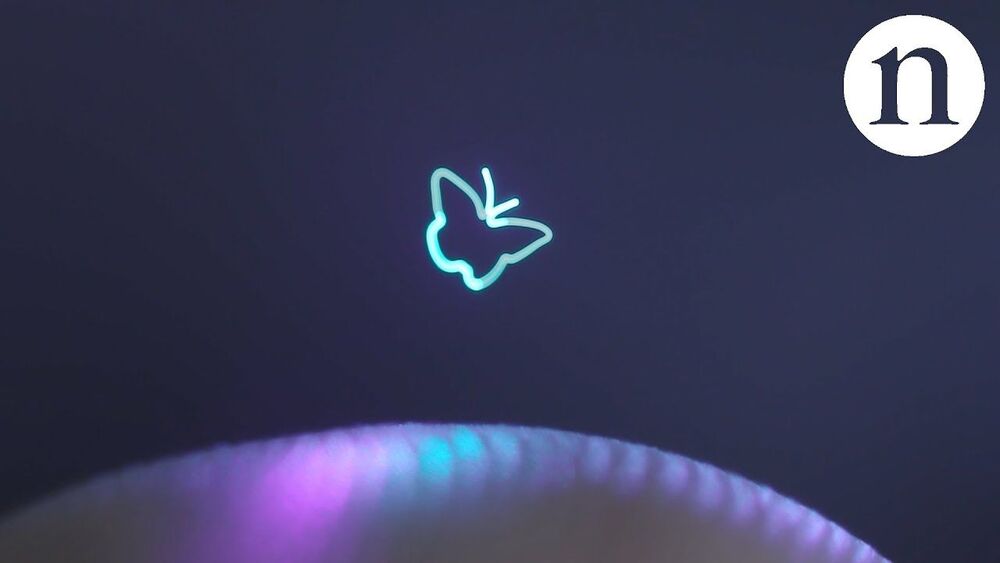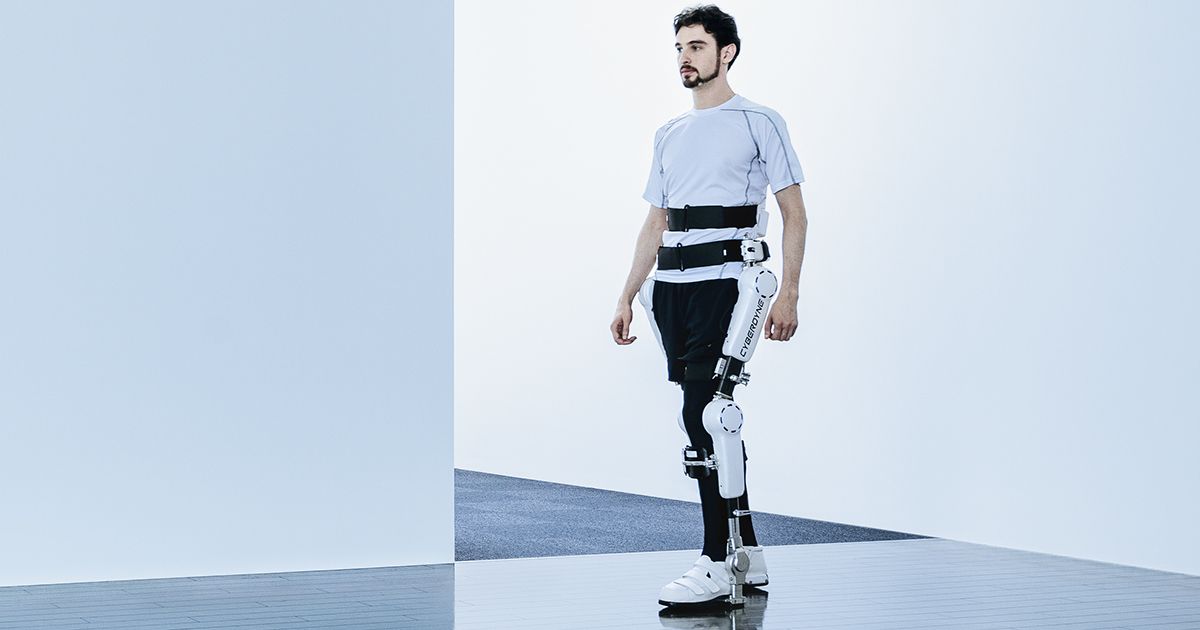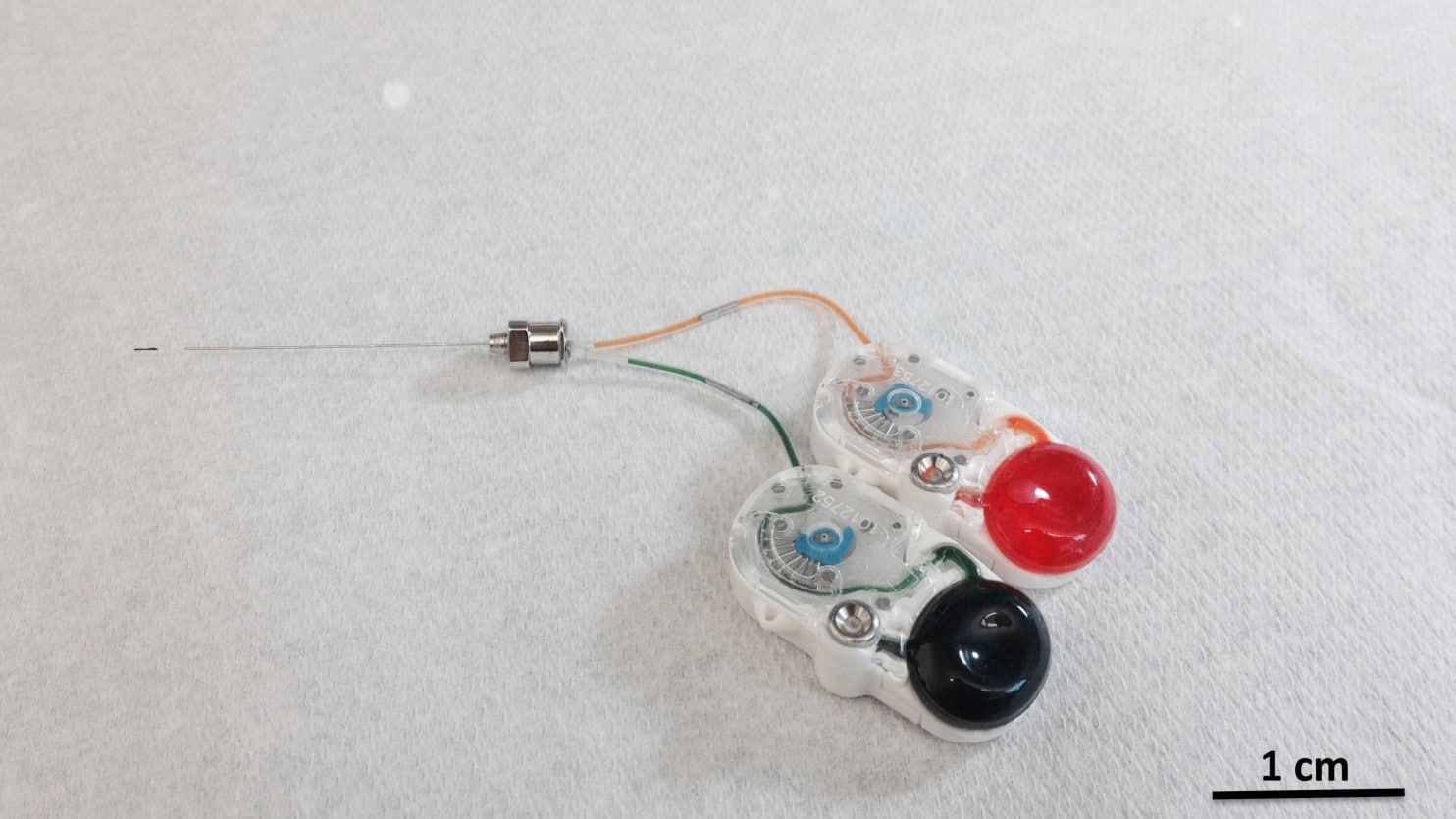Page 9177
Jan 24, 2018
SpaceX fires up powerful new Falcon Heavy rocket
Posted by Genevieve Klien in category: space travel
Jan 24, 2018
Better than holograms: A new 3D projection into thin air
Posted by Genevieve Klien in categories: holograms, particle physics, space

One of the enduring sci-fi moments of the big screen—R2-D2 beaming a 3D image of Princess Leia into thin air in “Star Wars”—is closer to reality thanks to the smallest of screens: dust-like particles.
Scientists have figured out how to manipulate nearly unseen specks in the air and use them to create 3D images that are more realistic and clearer than holograms, according to a study in Wednesday’s journal Nature. The study’s lead author, Daniel Smalley, said the new technology is “printing something in space, just erasing it very quickly.”
Continue reading “Better than holograms: A new 3D projection into thin air” »
Jan 24, 2018
Tiny implant opens way to deliver drugs deep into the brain
Posted by Nancie Hunter in categories: biotech/medical, engineering, neuroscience
WASHINGTON — Scientists have created a hair-thin implant that can drip medications deep into the brain by remote control and with pinpoint precision.
Tested only in animals so far, if the device pans out it could mark a new approach to treating brain diseases — potentially reducing side effects by targeting only the hard-to-reach circuits that need care.
“You could deliver things right to where you want, no matter the disease,” said Robert Langer, a professor at the Massachusetts Institute of Technology whose biomedical engineering team reported the research Wednesday.
Continue reading “Tiny implant opens way to deliver drugs deep into the brain” »
Jan 24, 2018
The male Y chromosome is slowly fading, and could disappear completely
Posted by John Gallagher in categories: biotech/medical, sex

The end of men? Experts reveal how the male sex chromosome could one day disappear completely.
Since the dawn of humanity, men have played a vital role in determining the sex of their offspring.
Continue reading “The male Y chromosome is slowly fading, and could disappear completely” »
An early investor explains why the social media platform’s business model is such a threat—and what to do about it.
Jan 24, 2018
First static fire test of Falcon Heavy complete—one step closer to first test flight!
Posted by Klaus Baldauf in category: futurism
Jan 24, 2018
Rocket Lab unveils ‘Humanity Star’ – a shiny satellite you can see in space
Posted by Klaus Baldauf in category: satellites

In addition to launching three Earth-watching satellites, Rocket Lab has sent up a satellite you can watch from Earth: a bright and shiny object christened Humanity Star.
Rocket Lab says Humanity Star, a geodesic sphere made of carbon fiber with 65 reflective panels, could well rank as the brightest satellite in the night sky.
Continue reading “Rocket Lab unveils ‘Humanity Star’ – a shiny satellite you can see in space” »
Jan 24, 2018
Embrace performance-enhancing drugs and technology in sport
Posted by Zoltan Istvan in categories: biotech/medical, transhumanism
 As we hear more and more about the upcoming Winter #Olympics in a few weeks, let’s remember the idea for a future Transhumanist Olympics: http://www.sfchronicle.com/opinion/openforum/article/Embrace…211040.php #transhumanism
As we hear more and more about the upcoming Winter #Olympics in a few weeks, let’s remember the idea for a future Transhumanist Olympics: http://www.sfchronicle.com/opinion/openforum/article/Embrace…211040.php #transhumanism
The 2016 Paralympics, which began this week in Rio de Janeiro, is bringing together 4,500 athletes to compete in 23 sports from wheelchair fencing to swimming to hand biking.
Jan 24, 2018
Cyberdyne’s Medical Exoskeleton Strides to FDA Approval
Posted by John Gallagher in categories: biotech/medical, cyborgs, robotics/AI

Cyberdyne, the Japanese robotics company with the slightly suspicious name, has just gotten approval from the U.S. Food and Drug Administration (FDA) to begin offering its HAL (Hybrid Assistive Limb) lower-body exoskeleton to users in the United States through licensed medical facilities. HAL is essentially a walking robot that you strap to your own legs; sensors attached to your leg muscles detect bioelectric signals sent from your brain to your muscles telling them to move, and then the exoskeleton powers up and assists, enhancing your strength and stability.
Users in the United States can now take advantage of this friendly exoskeleton to help them with physical rehabilitation.
Continue reading “Cyberdyne’s Medical Exoskeleton Strides to FDA Approval” »













